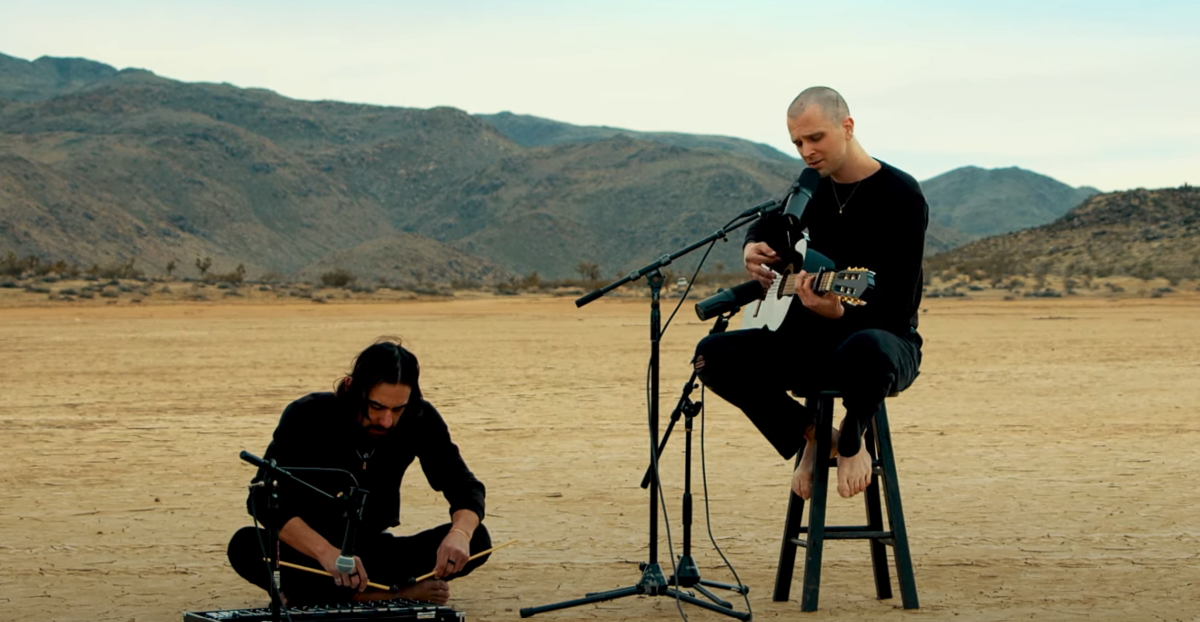Christian Marclay went from being a well-known artist to a very famous artist in 2010 thanks to
The Clock
, the monumental film that is just not in the exhibition that the Pompidou dedicates to it (and that they own one of the six copies of the unique edition).
It is a voluntary omission and designed so that it does not steal the function in a sample that has more of a select review than an encyclopedic retrospective.
Already in the interview with the catalog, he himself says almost sadly that it is what the English call an albatross: a work so magnificent that it becomes almost cancerous and that by unfolding its giant wings ends up overshadowing the rest of an artist's career.
However, despite her bad feelings, it is impossible not to think of her as the pinnacle, summary and emblem of all the ideas that make up her work.
It lasts exactly 24 hours and is made of movies, a cut-and-paste with thousands of fragments in a collage that sounds and moves.
Their stories intertwine or continue or cancel each other.
Throughout the century, all over the world, from Godard to the Teenage Mutant Ninja Turtles, from Bollywood to Hollywood, from Bette Davis to Brad Pitt.
There is not 'The Clock', the film that consecrated him, but his other great masterpiece, 'Video Quartet'
I was lucky enough to see it when it premiered at the White Cube gallery in London, in a continuous 24-hour session, without knowing what to expect.
The scenes followed one another and little by little one understood that they were intertwined because there was a clock in all of them.
Cuckoo, wrist, sun, digital, on station platforms or night tables, connected to pumps.
Then one realized something else: the time they marked advanced minute by minute, shot by shot, film by film.
And it was always the same time as the spectators' watches, outside the movie, in what we strangely call real time: I fell just at midnight and for an eternal minute dozens of filmed watches jingled, beeped, belled, ululated, and provoked in the audience a kind of shocked excitement.
You wouldn't take your eyes off the screen for hours, and that's normal in a movie theater.
But at the same time I was thinking about time and feeling it and seeing it go by: and that is much rarer.
Marclay was denying the greatest pleasure in cinema just when he seemed to be giving it in spades.
His film was not used to kill time, on the contrary: it revived dead time.
His passing was not only remembered, it was not only the theme of the film.
It was the movie itself: literally, a movie-watch.
'Prosthetics', 2000, by Christian Marclay.
Christian Marclay Studio
The clock
is a difficult work to exhibit and to see that complicates the life of the spectators: they enter the room and fall hypnotized and because of it they are late for other appointments, or they have to organize and change their plans, get up early or stay up late if they want to see it all.
That makes it a kind of collective
performance
that upsets the rhythms wherever it is projected.
It draws crowds and queues for miles and requires complicated infrastructure (for starters, 24-hour room staff shifts in museums).
In Paris, on the other hand, there were few people at this expo on a weekday afternoon.
And that was lucky, because it gave the opportunity to see with time and without stress other works of his that the wings of the albatross would have left in the shadows.
The seed from which all his
video collages
are born is in
Telephones
(1995), which lasts only a few minutes and which, based on putting together scenes from American films, reconstructs a single and multiple conversation on the telephone: first the ones that ring, then the ones that are picked up , then those who are answered, finally those who hang up.
A narrative arc that is both very simple and that in our imagination, in the thousand stories it contains, multiplies to infinity.
'Subtitled', a 2006 video installation by Christian Marclay.Courtesy of the artist Christian
And here Doors
is world-premiered
, the film that serves as a mirror and logical conclusion to
The Clock:
a loop without beginning or end of scenes taken from 100 years of cinema and linked by the moment a door opens or closes.
The clock
forced us to rethink and feel time as the very substance of our existence, as a lens from which we cannot escape to see the world.
Puertas
does the same with space: it builds a kind of mental labyrinth, an imaginary and impossible palace of intertwined architectures and narratives through which we have the sensation of getting lost or walking in infinite circles.
His work questions the idea of advancement and progress and opposes the simultaneous nature of existence
In an earlier piece, and perhaps his other great masterpiece,
Video Quartet
(2002), Marclay melded his two favorite raw materials, sound (in the form of music and also pure noise) and image.
He used them to compose a kind of symphony-
collage
for four screens and thousands of films, with its initial scores and tunes, its overture, its crescendo, its apotheosis and its final movement.
When I went, several children who were entering the room in the dark began almost without realizing it to imitate the sounds and voices on the screens.
The adults who accompanied them joked at them so they wouldn't bother, and others, on the other hand, asked them to let them hum and reconstruct the score in their own way.
Because surely for that matter those children were the best possible spectators.
That instinctive reaction, that intuitive and personal way of appropriating and literally reinterpreting the work, is the ideal for all of Marclay's work.
Her
collages
of her, her
performances
, her concerts and films question the supposedly adult and rational vision of the world: with its approaches, knots and endings, with its spatial and temporal logic.
Marclay examines the very idea of advancement and progress and opposes it to the simultaneous nature of existence: something we cannot rationally conceive, but can magically imagine and evoke thanks to his work.
Christian Marclay.
Pompidou Center.
Paris.
Until February 27th.
You can follow BABELIA on
and
, or sign up here to receive
our weekly newsletter
.
Subscribe to continue reading
Read without limits
Keep reading
I'm already a subscriber









